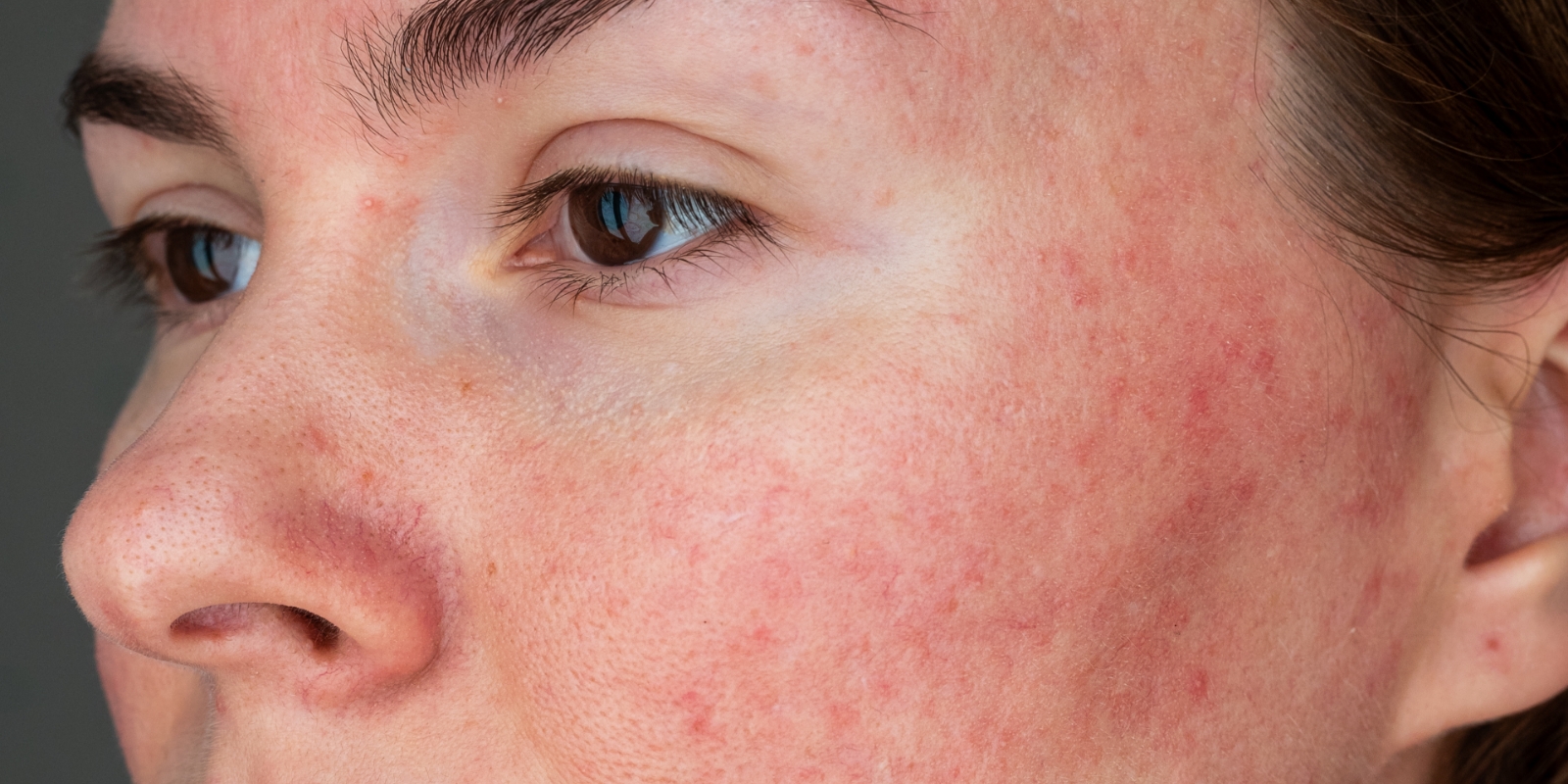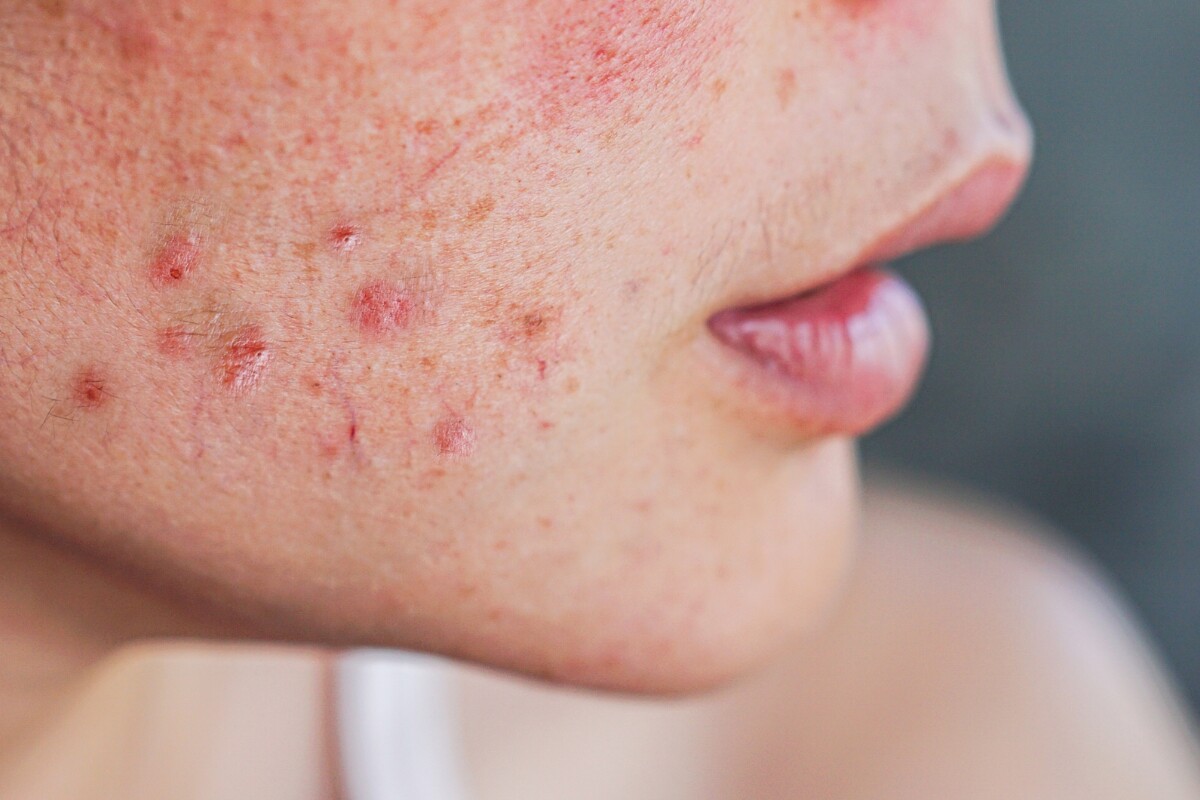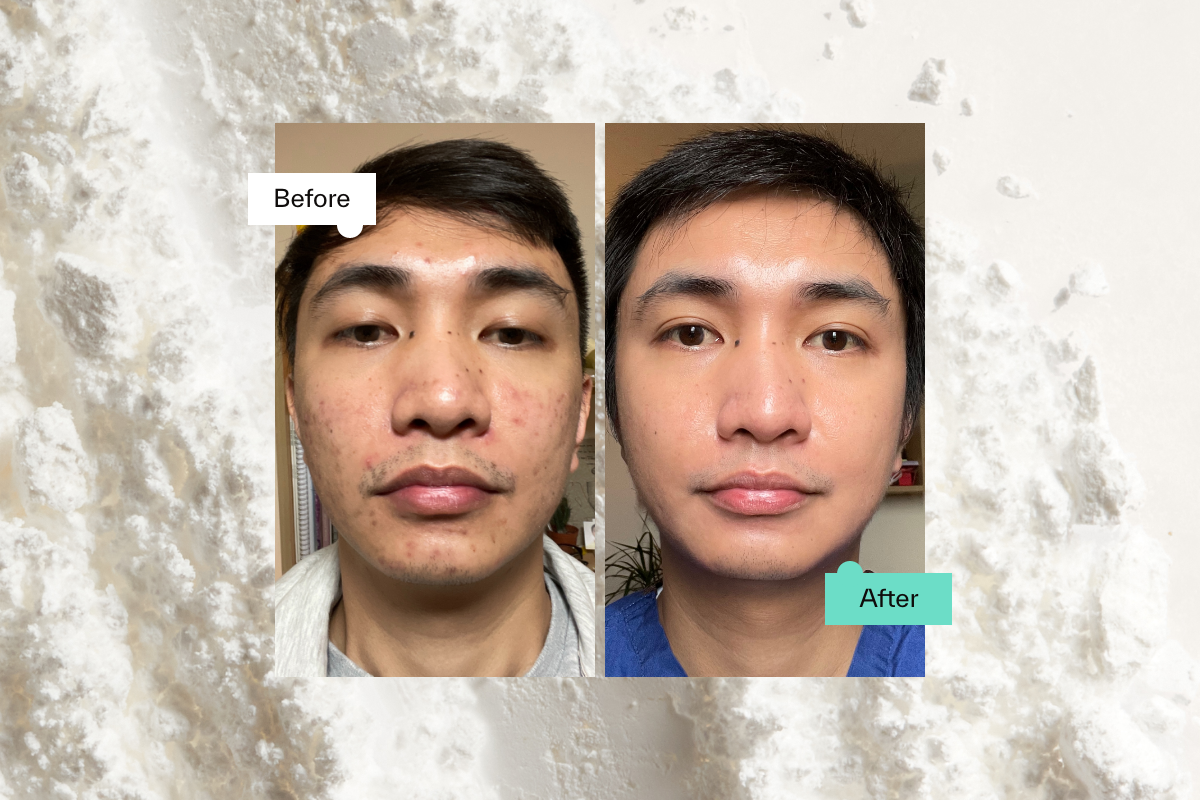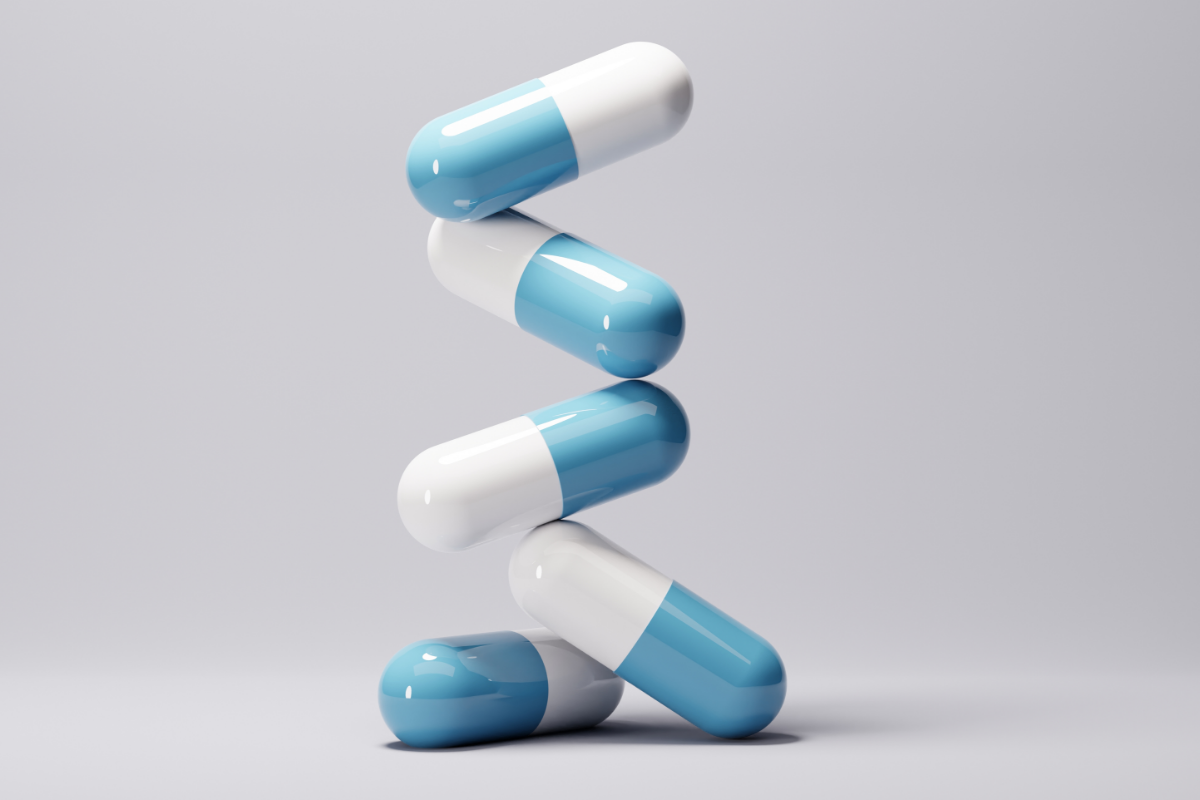Rosacea is a common inflammatory condition that mainly affects the skin. Symptoms can vary from person to person, but often it looks like a combination of redness or inflammation, small spots and bumps called papules, visible blood vessels, and watery or irritated eyes.
Understanding the triggers that can cause flare-ups is one of the most effective ways to prevent them. This article provides an in-depth look at the causes of rosacea flare-ups, the link between rosacea and diet, and how to track and manage these triggers effectively.
Recognising rosacea
What is rosacea?
Rosacea is a chronic inflammatory skin condition found mainly on the face. It primarily affects adults over 30 and is more common in people with fair skin. It’s a chronic condition but its symptoms can be managed with the right treatment and lifestyle changes.
Rosacea symptoms
The first signs of rosacea are persistent facial redness or inflammation, small solid bumps (papules) or pus-filled pimples (pustules), and visible thin, red lines caused by small blood vessels. People might also get irritated eyes, burning or stinging skin, rough or dry skin, raised red patches, skin thickening, and facial swelling.
Types of rosacea
Rosacea can appear in different forms, including:
– Erythematotelangiectatic Rosacea (ETR): This type causes persistent facial redness and visible blood vessels.
– Papulopustular Rosacea (PPR): Characterised by red, pus-filled bumps, this type is often mistaken for acne.
– Phymatous Rosacea: This condition results in thickening of the skin. It often affects the nose, causing a bulbous appearance.
– Ocular Rosacea: Affecting the eyes, it leads to irritation, light sensitivity, and painful bumps on the eyelids.
What triggers rosacea flare-ups?
Environment and diet can trigger rosacea flare-ups. Not everyone’s skin reacts to the same triggers, so it’s important to keep an eye on what might be affecting your skin to avoid them happening.
Certain foods and drinks
Certain food and drinks can trigger rosacea. These include:
– Alcohol, especially red wine
– Spicy foods
– Hot drinks
– Foods high in histamines, like aged cheese, wine, and processed meats
– Foods containing cinnamaldehyde like tomatoes, citrus fruits, and chocolate
Weather
Extreme weather conditions, including hot or cold weather, humid weather, wind, and sunlight, can also worsen rosacea symptoms. Remember to always wear a broad-spectrum sunscreen with at least SPF 30, and wear a hat and/or UV-protective clothing when spending time outside. When the weather turns cold, try to stay warm wherever possible – wear gloves, hats and a thick coat.
Emotional stress
Emotional stress and anxiety can trigger a rosacea flare-up. Discovering coping mechanisms and techniques to handle stress effectively can help reduce how often this happens. You can find out more about how to manage stress here.
Physical exertion
Over exerting yourself during exercise can trigger rosacea symptoms. If you notice this happens for you, try to adapt your exercise routine with less strenuous exercise to manage these flare-ups.
Medical conditions and medications
Certain conditions like menopause and chronic cough, as well as caffeine withdrawal syndrome, can trigger rosacea. Some medications like vasodilators and topical steroids can make symptoms worse, too. If you need to use these medications and your rosacea persists or gets worse, discuss it with your GP or doctor and ask their advice.
Skincare products
Some skincare products, especially those containing alcohol, witch hazel, or fragrances, can cause rosacea flare-ups. Choose skincare products carefully and avoid ingredients that cause redness or stinging.
Dermatica’s entire range of skincare essentials is designed to suit as many skin types as possible. If you have rosacea, opt for our Balancing Glycerin Gel Cleanser and Soothing Centella Gel Moisturiser. They’re both free from harsh irritants and fragrance, and are formulated using the NICE guidelines for sensitive skin.
Can’t control your rosacea flare-ups?
If you’re finding that your rosacea flare-ups are getting worse, or aren’t improving, speak to a dermatology expert or a doctor. Once they diagnose which type of rosacea you have, there are several types of oral and topical treatments they can offer to help reduce bumps, pimples, and redness caused by rosacea.
Dermatology experts can formulate a personalised treatment with topical antibiotics to relieve rosacea symptoms. Your formula’s ingredients are precisely measured to suit your skin type and your goals. A course of oral antibiotics like doxycycline can also be taken at the same time as a personalised treatment to speed up results.
Interested in finding out if this treatment is suitable for you? Our quick consultation process includes a photo submission and a series of questions, so our expert dermatology team can design a personalised formula and treatment plan designed to calm rosacea so you can experience fewer flare-ups.
1. Farshchian M, Daveluy S. Rosacea [Internet]. PubMed. Treasure Island (FL): StatPearls Publishing; 2021. Available from: https://www.ncbi.nlm.nih.gov/books/NBK557574/
2. Searle T, Ali FR, Carolides S, Al-Niaimi F. Rosacea and Diet: What is New in 2021? The Journal of clinical and aesthetic dermatology [Internet]. 2021;14(12):49–54. Available from: https://www.ncbi.nlm.nih.gov/pmc/articles/PMC8794493/
3. Zhang H, Tang K, Wang Y, Fang R, Sun Q. Rosacea Treatment: Review and Update. Dermatology and Therapy. 2020 Nov 10;11(1):13–24.
Ash Sharma
Dr Ashwin Sharma is a medical doctor and writer with a particular interest in health technology, artificial intelligence and medical weight loss. He completed his training at the University of Leicester and Imperial College London, and has since been exploring the intersections of medicine, technology, and communication.
Related Posts
January 15, 2024
0 Comments5 Minutes




